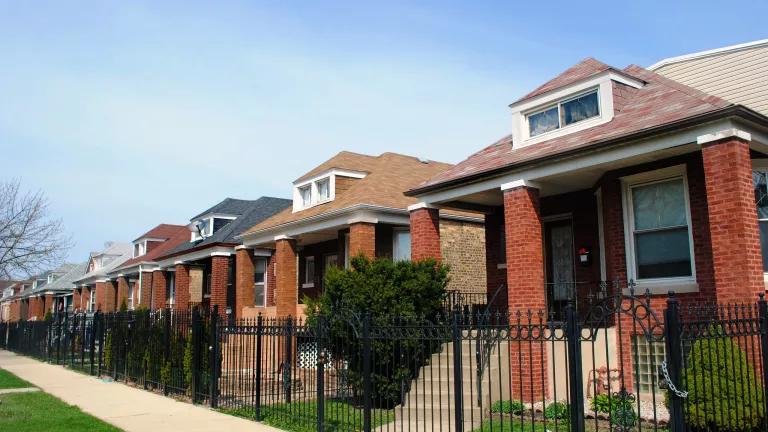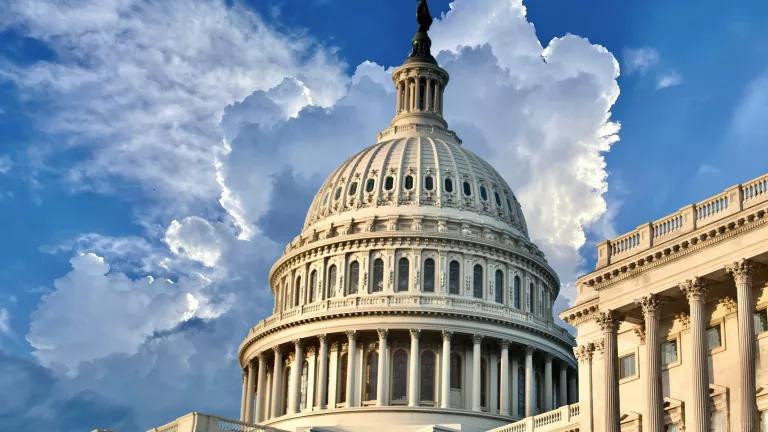
As the old saying goes, actions speak louder than words.
At today’s public meeting, the New York Public Service Commission (PSC) approved two major initiatives that will help achieve Governor Andrew Cuomo’s bold vision for New York State’s burgeoning clean energy economy.
First, the PSC approved an order to dramatically scale up a critical cornerstone of any effective climate and clean energy portfolio: energy efficiency (EE). Department of Public Service (DPS) staff outlined an EE plan that—if effectively implemented—will drive an estimated $15 billion in customer savings by 2025, according to DPS projections. Second, the PSC approved a nation-leading commitment to accelerating energy storage in New York—a technology that is becoming increasingly important to a clean and dynamic energy system.
New York State: An Energy Efficiency Leader
On Earth Day, Governor Cuomo laid a marker down by committing the state to shore up its energy efficiency framework, bolstering New York’s status as a national leader in this space. Specifically, the Governor committed to scaling up annual investments to make homes and businesses more efficient—meaning that by 2025, annual efficiency investments like new lighting, appliances, and insulation installed in our buildings will provide savings equal to 3 percent of what demand would have been in that year without all that new efficiency. In addition to electric side savings, the program also calls for reductions in natural gas use. Achieving that level of savings each year will add up to huge numbers over time: the state’s overall goal is 185 trillion British thermal units (TBtu).
Over the past eight months, the New York State Research and Development Authority (NYSERDA) and the Department of Public Service (DPS) set out to determine the scope of achieving the Governor’s goal, including releasing a white paper, hosting a number of stakeholder technical conferences, and evaluating dozens of formal comments filed with the Commission. New Yorkers, from a diverse set of constituencies, made sure their expectations resonated: more EE for New York, and the proven economic, job creation, grid, climate and public health benefits those investments provide.
Clearly, their voices were heard:
Achieving New York’s Bold 2025 Target
PSC today laid out essential components for implementing the Governor’s ambitious target and ensuring New York is on the necessary, aggressive glide path to ramp up EE deployment. The estimated $15 billion in customer savings comes with projected program costs of only $1.6 billion—a clear win for New Yorkers.
Specifically, we’re encouraged by the following components of the Order:
- Clear targets and expanded role for utilities: The order adds an additional, incremental 31 TBtu of energy savings to be achieved by utilities beyond current efficiency investments. Importantly, the PSC has directed the utilities to ramp up now for 2019 and 2020, and given them 90 days to submit plans on how they will meet their expanded 2021-2025 obligations. We expect the PSC to act on those out year targets next summer after public comment.
- Smart treatment of clean electric heating and cooling: The state establishes a clean heating target of achieving 5 TBtu in energy savings by 2025 through electric heat pump installations. This is a promising step forward that we can and should build on to more rapidly move towards clean electric and geothermal heating. A recent analysis conducted by VEIC found that a more aggressive deployment of heat pumps could contribute 17 percent of the savings needed to achieve New York’s 185 TBtu 2025 efficiency target—although this is a more ambitious target than the one laid out today, establishing an explicit, expanded role for clean heating and cooling is an important first step.
- Low-to-moderate-income (LMI) customer focus: Staff reaffirmed their commitment today that—at a minimum—20 percent of the state’s investment in energy efficiency should be targeted at LMI customers. It will be essential for NYSERDA and the utilities to rapidly determine who is delivering those programs and get them on the street without delay. Additional details on the LMI portfolio are expected in early 2019 as well, and we’ll be digging in to the details in order to ensure investments in the sector—particularly in affordable multi-family housing stock—are realized in the near-term.
- Cost recovery: Importantly, the commission stated that utilities will be empowered to achieve greater efficiency savings through being able to recover the costs of making additional investments that are necessary to achieve the new, more ambitious goals. The commission smartly allowed the exact form of cost recovery to be tailored to the individual utility’s financial circumstances, allowing for the consideration of both amortization (which means spreading the cost for efficiency investments across a longer time horizon to mitigate bill impacts for customers), as well as measuring energy efficiency gains based on demand rather than exclusively volumetric measures. The order also contains incentives for utilities to make efficiency programs as cost effective as possible.
- Continued important role for NYSERDA to transform the market and coordinate with the utilities: PSC reaffirmed the key role NYSERDA will continue playing to transform the market and “prime the pump” upstream so that more energy efficient appliances and other technologies can be incorporated into projects is essential, along with their continued coordination statewide with the utilities.
- Better data access: Finally, the order paves the way for a more transparent data access system which allow for greater penetration of EE measures—and other distributed energy resources—into the market. This includes the expansion of the Green Button program.
Progress on Energy Storage
Energy storage has a critical role to play in transitioning to a clean energy future, especially paired with smart policies to rapidly decarbonize our power supply and innovative (but not overly complex) rate designs to shape how we all utilize the grid. In light of mixed signals in other parts of New York’s energy system—namely, market rules being developed at the New York Independent System Operator (NYSO) that threaten to create an unjustified roadblock to a rapid scale up of new technologies—Governor Cuomo and the PSC made a strong stand for the importance of energy storage in New York.
Specifically, the order built on the state’s existing target of 1500 MW of storage by 2025 to lay down a marker of 3000 MW by 2030. This establishes one of the biggest storage commitments in the nation. These goals will be supported by $310 million in existing funds from the state’s renewable portfolio standard program to serve as an incentive to jumpstart the market.
The order also contains smart implementation recommendations, such as ensuring that incentives are awarded through a highly competitive process. The order also works to ensure that energy storage is deployed in a manner to deliver the biggest emissions and health savings to New Yorkers by directing Con Edison and NYISO to work with the state to develop contingency plans for the retirement of gas “peaker” plants, that would evaluate how renewable energy and storage resources could be used to provide the same energy benefits as dirty gas plants currently on-line.
The state’s strong commitment to energy storage is also an economic winner for New York because of the industry’s significant job growth potential. We’ll be working diligently to ensure that the state’s energy storage goals don’t fall prey to unfair rules from the NYISO that would make it more difficult for battery storage to compete in the market and be compensated for their various benefits to the grid.
Finally, the Commission approved additional rules that will seek to promote systems that combine storage with solar. Such “hybrid” systems are consistent with the state’s efforts to move toward a cleaner and more dynamic grid.
Now Let’s Get to Work
Many constituencies have been awaiting greater clarity and regulatory certainty to really ramp up energy efficiency in the state for some time. We’ll be evaluating the important details of both orders as they come to light, but based on today’s PSC session, it’s a big day for the Empire State’s burgeoning clean energy economy. We look forward to continuing to work with state agencies, utilities, and other stakeholders deliver a clean energy future for all New Yorkers.
The energy efficiency and storage orders can be found here when posted.




